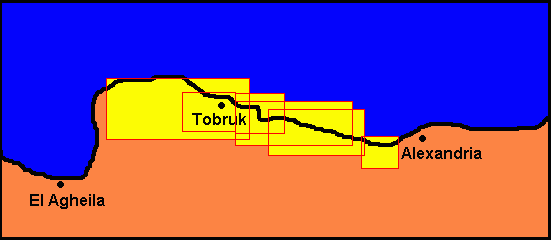
Rommelís campaign in Africa was conducted largely in the deserts of Cyrenaica (now Libya) and Egypt. The terrain is a wasteland of hard, dry plains broken by sand seas. There are occasional oasises, wells, and salt marshes, as well as a formidable escarpment separating the coast from the interior. The three most significant features are the Jebel Achdar (Green Mountains) near the coast west of Tobruk, the Qattara Depression, a vast salt marsh southwest of Alexandria, and Via Balbia, the ancient coastal road that runs through the entire theater. No more than a million people inhabit this desolate region.

Desert warfare is ideally suited to mechanized operations. Rommelís success in the desert theater has been attributed to his mastery of mobile warfare. On the other hand, the British often failed to exploit the advantages of mobility. Reconnaissance units were particularly crucial in the desert as there were few landmarks to guide forces. Rommelís recon elements once logged 159km in just 24 hours.
Before Rommel arrived on the scene, British forces in Cyrenaica were under the command of Sir Richard OíConnors. OíConnors drove the Italian 10th Army, the sole Axis commitment to the region, westward until their surrender near El Agheila in February 1941. This failure finally turned some German attention to the desert. Rommel, sent with slim resources, was to defend Tripolitania and prepare for an eventual counteroffensive.
The British seriously underestimated the Germansí ability to wage war in the desert in early 1941. As a result, only the 2nd Armored Division, 9th Australian Division, and one Indian motorized brigade were left on occupation stations. Rommel took advantage of this by striking March 31. The 3rd Recon Battalion and 5th Light Division routed the British 2nd Armored Division screening El Agheila and, with Italian armor, advanced eastward across the desert. Meanwhile, Italian infantry pursued the British along the coastal road.
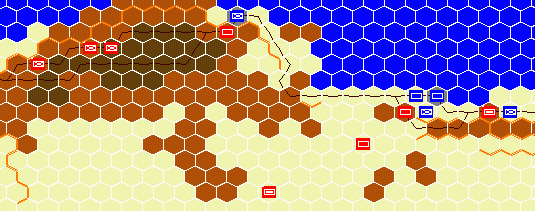
By April 6 Rommel had advanced 400 miles. He assigned some of his force to begin a siege of Tobruk while the bulk of his units pushed on toward Egypt. The advance was halted in the vicinity of Sollum where the British had developed a trench system. Rommel concentrated his striking forces on the southern flank. The Afrika Korps was now reinforced to three divisions: the 5th Light, 15th Panzer, and 90th Light, plus an Italian division. Skirmishes occurred at Tobruk and Sollum through mid-June.
The British Operation "Battleax" began June 15. British commander Wavell had the 7th Armored and 4th Indian Division at Sollum. The 4th advanced against the city while the 7th circled to the south. Due to poor radio discipline, Rommel was alerted to the attack. Axis infantry held their positions and Rommel drove behind British forces. This was the first engagement in which the 88mm AA gun was used in an anti-tank role. When the battle was over, neither side had gained significant ground. Wavell, who began the offensive at Churchillís urging, was now replaced by Auchinleck.
Both sides began to rebuild after Battleax. Rommel was at a disadvantage in that the Axis still considered the North African theater a sideshow. In addition, supply lines were long and under constant threat from Allied forces stationed on Malta. However, just as Rommel needed materiel, Auchinleck needed trained forces.
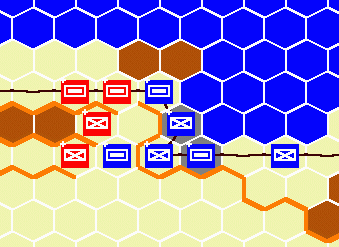
The next Allied offensive, Operation "Crusader" was conducted in mid-November. The British 8th Army, now consisting of six divisions and six brigades with 900 tanks, executed a plan similar to Battleax. An infantry advance was coupled with mobile units swinging to the south. This time Rommel seems to have ignored his intelligence reports and British armor managed to penetrate deep into the Axis rear. During massive tank action, Rommel ordered a raid into Egypt. This division of force proved disastrous for Rommel as his units, seriously depleted, were forced to fall back. At the same time, the Tobruk garrison broke out and joined the British forces. Rommel retreated to Gazala on December 4 and was all the back to El Agheila by December 15.
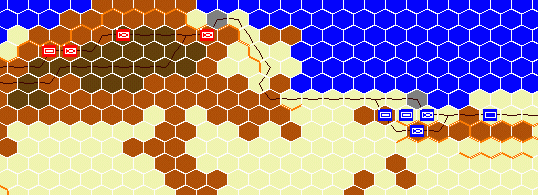
Despite being pushed back over all the terrain they had covered in the previous months, Axis morale was high. Rommel had conducted a masterful retreat, saving nearly all his forces. Also, Japan had just entered the war and the Russian campaign was seeing early success. As a result, just a month after the retreat Rommel was on the advance again. Axis forces were back on the Gazala Line by February 6. During this advance the British 1st Armored Division alone lost more tanks than Rommel had under his command.
A four month build-up commenced at Gazala. Again the British could benefit more from this situation. Rommel now had eleven German and Italian divisions on paper, but less than the strength of two divisions in reality. The British fortified their position with boxes of infantry stretching 40 miles inland. Each box was a self-contained fortress supported by mines and fences. Auchinleck held his tanks in reserve.
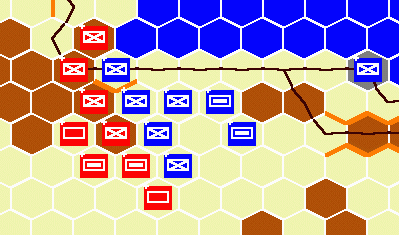
The Axis advance began on May 26 with only half as many tanks as the British. However, for once the Axis would have dominate air support thanks to aircraft "borrowed" from the forces slated to raid Malta. Rommel had planned to conduct an infantry screen of the Gazala Line, destroy the southernmost box, and sweep his mobile forces around the southern flank. The German and Italian armor succeeded in turning the southern flank, however the Free French defending the southern fortress refused to fall. Neither side could deliver a smashing blow and fighting continued for two weeks in the "Cauldron". Finally the French forces were overrun and the British made their retreat.
The British left only the 2nd South African Division in Tobruk which fell quickly on June 21. The capture of this key objective gave the Axis a new port in the African theater and some much needed supplies. Rommel might have stopped the pursuit at this point, but instead chose to follow the British deep into Egypt and to keep his "borrowed" air power. A running battle to Alamein proved costly for the Germans.
The first Battle of Alamein, was conducted throughout July. In this conflict the British finally bested the Germans in mobile warfare. Despite Auchinleckís relative success at Alamein, he was replaced by Montgomery. The Alamein position is unique in the desert. It is bounded by the sea to the north and the Qattara Depression to the south, and divided by a series of ridgelines running parallel to the coast.

Fighting resumed August 30 with the Battle of Alam Halfa. Rommel attempted to attack through the south end of the Alamein line. Slowed by British armor and low on fuel, his forced turned north earlier than planned and faced well-fortified positions along the Alam Halfa Ridge. By September 4 the Axis forces were back where they had begun the attack.
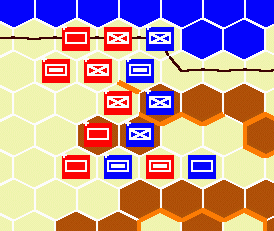
The final battle at El Alamein began on October 23, while Rommel was away in Germany. The Axis infantry were positioned in the front lines, supported by mobile forces in the rear. Montgomery used an unsophisticated plan, relying on the sheer mass of British forces to overwhelm the enemy. The British achieved a breakthrough on November 2 but were unable to exploit it immediately. On November 3 Rommel fell back 60 miles to Fuka. At this point, Hitler intervened with orders to "hold or die". The Axis held their ground for 36 hours before Hitler relented. Rommel managed to save the mobile core of his army, but was forced to sacrifice 30,000 infantry to the advancing British. The Axis forces retreated west along the coastal road and, at the end of the year, passed out of the desert theater.

The Wargames scenario "The Desert Fox" (ROMMEL.WAR) models the desert campaign from March 1941 until December 1942. The "historical" thread of the script is a record of the actual events as detailed above.
Carver, Michael, El Alamein, The MacMillan Company, 1962.
Dunnigan, James F., The Complete Wargames Handbook, William Morrow and Co., 1992.
Montgomery, Bernard, El Alamein to the River Sangro, Hutchinson and Co., 1948.
Playfair, I.S.O, The Mediterranean and Middle East, Vols 2&4, Curwen Press, 1956.